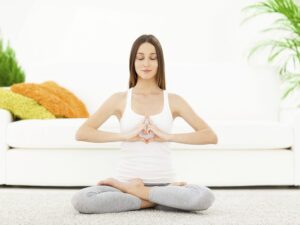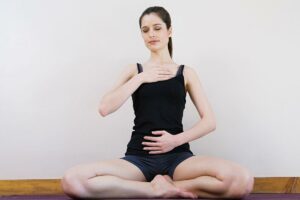Part 1. Warm up
Standing with your feet shoulder-width apart, your feet are parallel, inhale stretch your arms up (do not throw your head back), hold your breath for a short time at the top, and exhale, tilting the body forward and lowering relaxed hands to the floor and relaxing your face, body, arms, neck. At least 10 times. More: https://www.julianalucky.com/post/10-awesome-birthday-party-ideas-for-4-year-old.
Standing with your feet shoulder-width apart, feet parallel, with an inhalation, stretch both arms and palms to the sides, pull your fingertips from the spine to the sides. Hold at the peak of inhalation while maintaining traction. Exhaling, bend your elbows, touch the center of your chest (Namaste) and, keeping your palms together, stretch your arms and palms forward, straight from your chest forward. With an inhalation, return to the starting position, exhale and begin a new cycle. At least 10 times.
Standing with feet shoulder-width apart, feet parallel or toes slightly outward, with an exhalation, do a half-squat (Utkatasana), at the same time pull your arms up, palms up, hands shoulder-width apart (do not join your palms). With an inhalation, join your hands in a lock behind your back, and when you get up, point your hands up, which will facilitate their massage. At the peak of inhalation, do not hold (you may feel dizzy), but immediately start a new cycle – sit down smoothly with exhalation, etc. It is important to remember that when we squat, the feet are parallel or the toes are slightly wider than the heels, and the weight of the body is more on the outside of the feet, not in. Do at least 10 cycles.
Having done just a warm-up, you will feel how the body has warmed up, and a surge of vigor!
Part 2. Combined postural-breathing practices
Take the Half Bridge Pose (Khandarasana) and do 30-108 cycles of Kapalabhati, working with the stomach (with exhalation, the front wall of the abdomen is pressed both due to muscle contraction and due to the fact that air leaves the lungs). If you have time, rest 2-3 minutes in Savasana and do 2 more sets of the exercise. The pose releases tension from the deep muscles of the pelvis, which is very beneficial for the genitourinary and excretory systems, and also activates the 3 lower chakras.
Take the “plank” position – upper Dandasana for girls and lower (with arms bent at the elbows) for boys – and breathe in Full yogic breathing, 10-20 cycles or according to sensations (to failure, if possible, work out honestly). If you have time, rest 2-3 minutes in Shavasana and do 2 more sets of the exercise, only now like this: the second set at 70% of the possibility, and the third at half strength, at 50%. The pose includes the 1st and 3rd chakras, strengthens the abs and buttocks, and partly, to a lesser extent, also the arms (especially the forearms) and pectoral muscles.
Lie on your back, arms along the body on the floor. At least 10 times with exhalation (Ujjayi breath) raise your shoulders and upper back 10-15 cm from the floor, with inhalation (Ujjayi breath) we return to the starting position. This exercise strengthens the abs and activates the 3rd (Manipura) and 5th (Vishuddhi) chakras. Then, at least 10 times, raise (exhale from Ujjayi) and lower (inhale, from Ujjayi) only the head – massage and strengthening the neck, improving blood circulation in the neck vessels supplying the brain, normalizing eye pressure and not only, as well as further activation of the Vishuddhi chakra ( throat). The last 3rd phase of the exercise is a static hold of the head 2-5 cm above the floor (so that the maximum tension of the neck muscles is felt) against the background of slow, deep (“into the stomach”) breathing of Ujjayi.
Perform the “Dolphin” exercise, first holding the exhale 4-5 times (Bahir Kumbhaka), then 4-5 times the breath hold (Antar Kumbhaka). Do not save strength, this is the last strength exercise.
Part 3. Hitch
Perform Paschimottanasana (“Back Stretch Pose”), Parivrtta Jana Sirshasana (“Twisted Head to Knee Pose”) and Ardhamatsyendrasana (“Half Twisted Pose”), with slow breathing from Ujjayi. For safe execution, in twists there is an emphasis on relaxing horizontally and stretching vertically, not vice versa. Do not use your hands to turn the body in turn, it is traumatic. Neck in comfort. Do not use excessive efforts even for stretching, perform all three poses as if in a half-asleep. This is a hitch and the beginning of relaxation.
Part 4. Rest
Lie in Savasana for 5-15 minutes, but bend your knees and cover yourself with a warm blanket. You will notice the positive effect of this variation.
Part 5. Breathing Practices and Meditation
Sit down if drowsiness is felt or stay lying down if drowsiness is not present. And carefully observing the sensations when breathing, count 30 cycles: 30 breaths and 30 exhalations), mentally repeating the affirmation: “I am relaxing” or “I am calm and focused.”
You will notice that as a result of practice, the affirmation was realized and you received a given state – perhaps for the whole day ahead.